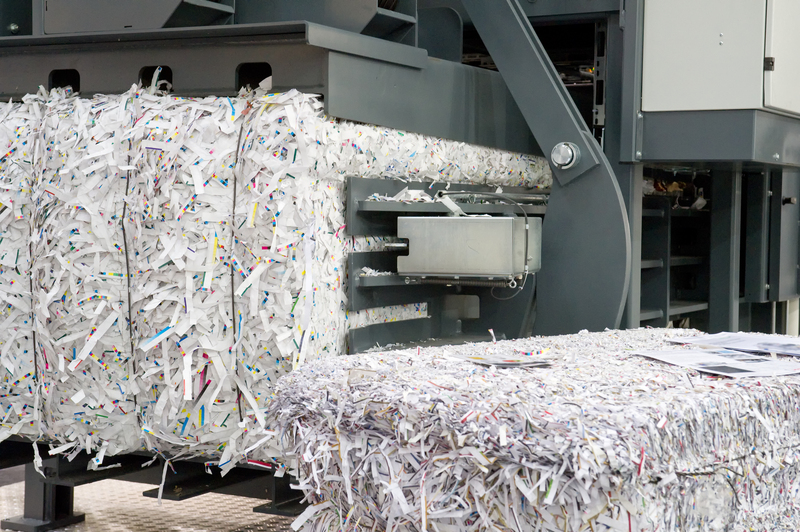Everything You Need to Know About the Right Way to Discard PPE Waste
PPE (Personal Protective Equipment) has become a household term around the globe. With its increased use in the healthcare sector, industries, and even daily lives as a result of pandemics or hazardous work conditions, managing PPE waste disposal properly is more important than ever. Improperly discarded PPE can have severe repercussions on both public health and the environment. In this comprehensive guide, you'll learn everything you need to know about the right way to discard PPE waste--from understanding the dangers of incorrect disposal to following best practices for different types of PPE.
What Is PPE Waste?
PPE (Personal Protective Equipment) includes items such as:
- Face masks (surgical masks, N95 respirators, cloth masks)
- Gloves (latex, nitrile, vinyl, etc.)
- Face shields and goggles
- Protective gowns and coveralls
- Shoe covers and hairnets
Once these PPE items have been used, especially in medical or hazardous environments, they become PPE waste and require safe, responsible disposal.

Why Is Safe PPE Waste Disposal So Important?
The correct disposal of PPE waste safeguards public health, protects sanitation workers, and prevents environmental contamination. Let's highlight some key reasons why finding the right way to discard PPE waste is so crucial:
- Infectious Risk: Used masks, gloves, and gowns can harbor bacteria, viruses, and other pathogens, risking transmission if not disposed of properly.
- Environmental Hazard: Most PPE is made from single-use plastics that take hundreds of years to decompose, contributing to landfill problems and ocean pollution.
- Wildlife Threat: Animals can mistake discarded PPE for food or become entangled in items like masks and gloves.
The Escalating Challenge of PPE Pollution
During the COVID-19 pandemic, an estimated 129 billion face masks and 65 billion gloves were used globally every month. Sadly, a significant portion of this PPE waste was found littered on streets, waterways, and landfills, presenting an emerging crisis for both the planet and its inhabitants.
Types of PPE Waste -- And Why Their Disposal Matters
Understanding the variations in PPE and their waste implications is vital for correct handling. Different types of PPE demand different disposal methods to reduce health and environmental hazards.
- Medical PPE Waste: This includes gear used in hospitals and clinics by healthcare personnel. It is often contaminated with bodily fluids or pathogens, qualifying it as biohazardous waste.
- Industrial PPE Waste: PPE used in factories, construction sites, or chemical processing plants is often contaminated with harmful substances, including chemicals or heavy metals.
- Domestic PPE Waste: Masks, gloves, and face shields used in homes or public settings, which are generally considered less hazardous but still need proper disposal.
General Guidelines: The Right Way to Discard PPE Waste
Whether you're a healthcare professional, essential worker, or a member of the general public, following these PPE waste disposal best practices is crucial:
Step 1: Preparing PPE for Disposal
- Remove PPE properly: Avoid touching the outer surfaces of used PPE. Dispose of gloves first, then remove your mask or goggles by handling only the ear loops or straps.
- Do not reuse single-use PPE: Once used, single-use PPE should never be reused.
Step 2: Segregation at Source
Effective PPE waste segregation is paramount. Here are the recommended steps:
- Separate contaminated PPE: Do not mix PPE waste with household trash or general waste.
- Designated disposal bins: Use marked bins or bags for collecting PPE. Biohazard bags (usually red or yellow) should be used for medical or highly contaminated PPE.
Step 3: Safe Containment and Handling
- Double-bagging: Especially for medical PPE waste, double-bagging reduces leak risk and cross-contamination.
- Seal securely: Bags containing PPE waste should be tightly sealed to prevent exposure.
- Label clearly: Indicate that the bag contains potentially infectious PPE waste.
Step 4: Final Disposal Protocols
The fate of PPE waste varies depending on local government and health authority regulations. It's critical to follow local guidelines. Generally:
- Medical PPE waste goes to authorized biomedical waste treatment facilities for incineration or autoclaving.
- Domestic PPE waste should be disposed of in a dedicated bin, separate from recyclables or organic compost; double-bag if possible and coordinate with your municipal waste service if special collection is available.
- Never throw PPE in recycling bins. Most PPE cannot be recycled through regular municipal systems.
Important Note on PPE Recycling
While most PPE is not recyclable through curbside programs, specialized recycling schemes for PPE waste are emerging in some communities and workplaces. Check locally for available PPE recycling initiatives.
Special Considerations for Different Types of PPE
How to Discard Used Face Masks Safely
- Do not touch the mask front when removing.
- Place used masks in a sealed bag before disposal.
- Wash your hands thoroughly after discarding.
How to Dispose of Used Gloves Properly
- Peel gloves off from the wrist, turning them inside out.
- Place gloves in a separate sealed bag, especially if contaminated.
- Immediately wash your hands with soap and water.
Safe Disposal of Gowns, Coveralls, and Face Shields
- For medical gowns and coveralls, treat as biohazard.
- Reusable gowns should be placed in designated laundry bags, not mixed with regular laundry.
- Disinfect reusable face shields before washing or reusing; dispose of damaged ones as PPE waste.
Protecting the Environment: Reducing Your PPE Waste Impact
While safe disposal is needed, reducing PPE waste is equally important in the long term.
- Choose reusable PPE when possible (e.g., washable cloth masks, goggles).
- Only use PPE as needed -- avoid unnecessary use of single-use items.
- Look for PPE made from biodegradable or recyclable materials where available.
Educating others about the right way to dispose of PPE waste can make a collective difference.
What Happens If PPE Waste Is Not Disposed of Properly?
- Health Risks: Improperly discarded PPE can transmit infections and endanger waste workers and the general public.
- Environmental Pollution: Non-biodegradable PPE clogs waterways, harms marine life, and adds to landfill crisis.
- Fines and Legal Action: Many locales penalize improper handling of medical and hazardous waste.
The Role of Businesses and Institutions in PPE Waste Disposal
For workplaces and institutions, proper PPE waste management protocols are not negotiable. Steps include:
- Deploy clearly labeled PPE disposal bins in high-usage areas.
- Train staff on safe donning, doffing, and disposal of PPE.
- Establish contracts with certified medical waste handlers.
- Monitor compliance and update guidelines as necessary.
Implementing a robust PPE waste program is critical to maintaining a safe, healthy working environment.
Emerging Innovations in PPE Waste Recycling
As the scale of PPE waste grows, scientists and innovators are developing new technologies to recycle or repurpose used PPE. Some pilot initiatives have turned single-use masks into construction materials or road surfaces. Keep an eye on local developments and participate in recycling programs where available.
Disposal of PPE Waste: Regulations and Compliance
Laws concerning the right way to discard PPE waste are typically dictated by national or local health departments and environmental agencies. Key points include:
- Mandatory segregation: Many countries require PPE waste to be packed and labeled separately from general trash.
- Prohibited dumping: Illegally dumping PPE waste can incur heavy fines and sanctions.
- Reporting protocols: Healthcare facilities may be required to report PPE waste volumes and management practices to authorities.
Stay informed on current regulations in your area to ensure compliance and avoid penalties.
PPE Waste Management During Pandemics and Public Health Crises
During outbreaks and emergencies, the volume of PPE waste can surge exponentially. Hospitals, public spaces, and even households may need to enact enhanced waste protocols, such as:
- More frequent collection and disposal of PPE waste.
- Dedicated bins in public areas, transit stations, and entrances.
- Public awareness campaigns on the importance of correct PPE waste disposal.
FAQs on Discarding PPE Waste
- Can I recycle PPE waste?
Most PPE, including masks and gloves, cannot be recycled via standard programs. Check for specialized collection schemes in your area. - Is it safe to throw used PPE in regular trash?
For non-contaminated, domestic-use PPE, use a sealed bag and separate it from recyclables. Always follow local guidelines. - What should I do if I see PPE littered in my neighborhood?
Wear gloves to pick it up, place it in a sealed bag, and wash your hands afterward. Alert your local waste authority if littering is prevalent. - Can PPE be composted?
No--most PPE is plastic-based and non-compostable.

Key Takeaways: How to Discard PPE Waste Responsibly
Proper PPE waste disposal is an essential part of public health and environmental protection. Always:
- Use the appropriate disposal method for each PPE item.
- Never mix PPE waste with recyclables or compost.
- Double-bag and seal PPE waste items before disposal.
- Stay updated on local regulations and available recycling options.
- Educate others and spread awareness about the correct way to dispose of PPE waste.
Conclusion: Your Role in Safe PPE Waste Management
The surge in PPE use worldwide makes responsible PPE waste disposal a shared responsibility. By understanding the risks, following the right practices, and supporting innovation, you are not only protecting your own health but also safeguarding your community and the planet. Spread the word, take action, and make better choices every time you discard PPE waste.
Remember: Every correctly discarded mask, glove, or gown is a step toward a cleaner, healthier world.
